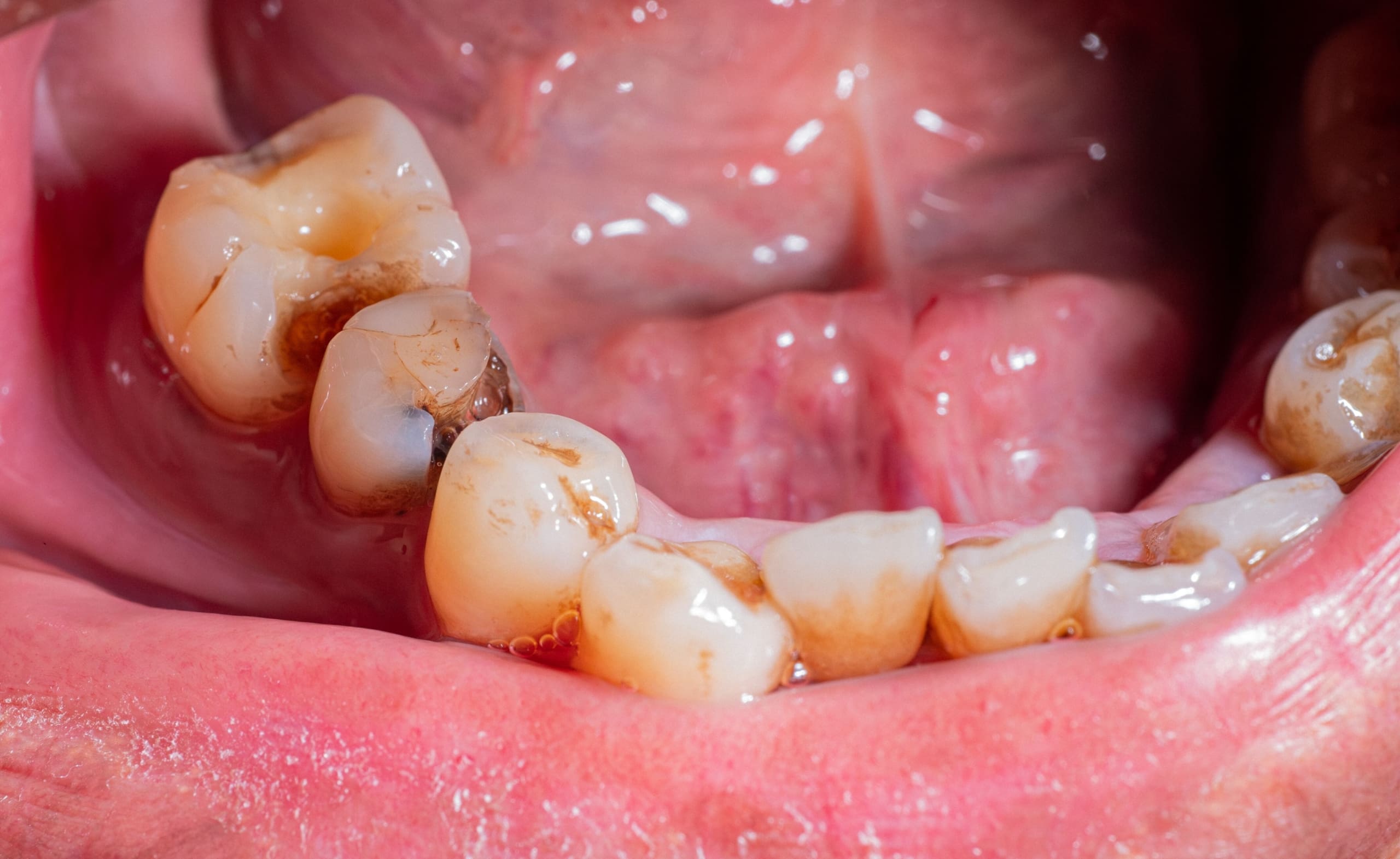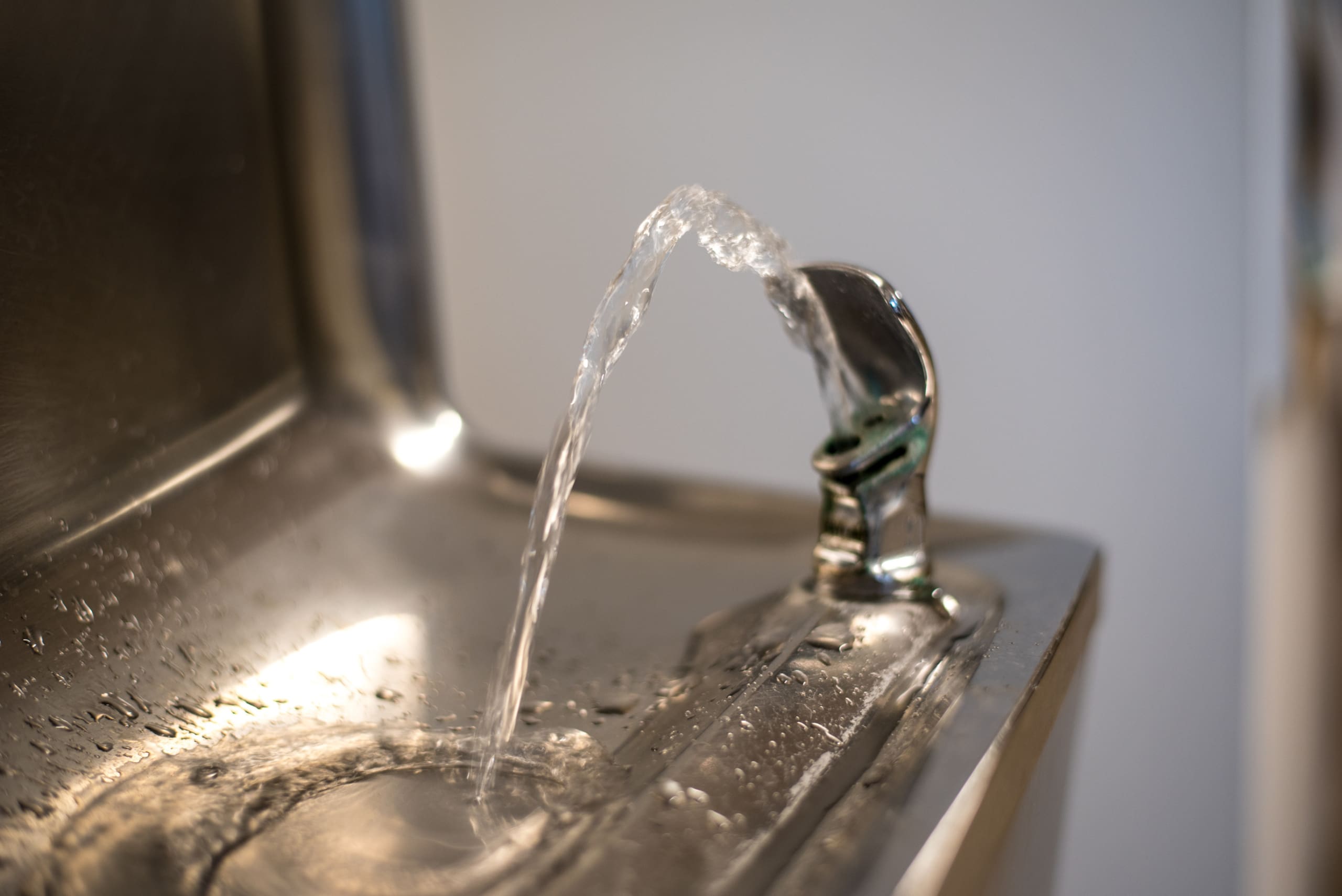Health Basics: Fluoride
Learn about fluoride and how it works to protect teeth.
Reviewed by Rena D’Souza, DDS, MS, PhD and Connie M. Weaver, MS, PhD. Last updated September 18, 2025.
Fluoride is a naturally occurring mineral found in water, soil, and certain foods. It has been widely used for decades to help prevent tooth decay and strengthen enamel, the hard layer that covers the crowns, or visible part, of teeth. In many communities, small amounts of fluoride are added to public drinking water to improve dental health. Fluoride is also a common ingredient in toothpaste and mouth rinses. Used appropriately, fluoride is a valuable tool for protecting teeth at all ages.
What is fluoride, and why is it in toothpaste?
Fluoride is a mineral that promotes dental health by strengthening enamel and protecting teeth from decay. It can be applied topically via toothpaste, mouth rinses, and professional treatments formulated with fluoride.
Fluoride occurs naturally in water and in trace amounts in many foods. The level of fluoride naturally occurring in water varies depending on the area. In areas where drinking water has low levels of fluoride, it is often added to the water supply to improve dental health benefits.

What is tooth decay? How does it affect overall health?
Tooth decay is when the hard, outer surface of the tooth, called enamel, is worn away by acids produced when bacteria in your mouth break down sugars. Over time, this can lead to cavities that may cause pain, infection, and even tooth loss if untreated. Tooth decay can impact overall health and well-being by making it harder to eat, speak, and sleep. In some cases, tooth decay can lead to infection that can spread to other parts of the body. Poor oral health is linked to other health conditions: for example, people with untreated tooth infections are almost three times more likely to have cardiovascular disease than those with good oral health.
How does fluoride help prevent tooth decay?
Using toothpaste with fluoride significantly reduces the incidence of tooth decay. Fluoride works locally through a process called remineralization that restores the mineral content of tooth enamel. Over time, tooth enamel is degraded by consuming acidic foods and beverages, as well as normal wear and tear caused by chewing. Remineralization can help strengthen teeth to better protect from decay. This process is aided by saliva, which combines with fluoride to help incorporate the mineral into tooth enamel. Fluoride strengthens the enamel, making it less susceptible to acid erosion and helps prevent cavity development.

Tooth decay can lead to cavities that may cause pain, infection, and even tooth loss if untreated. Photo: ridersuperone via Shutterstock
Why do some communities add fluoride to their water supply?
Although topical application through toothpaste and other products is the primary way fluoride is used, water with added fluoride can also play a role in protecting teeth, particularly in the growth of teeth before they break through the gums in childhood. Fluoridated water helps teeth form stronger enamel that is more resistant to decay. Fluoridated water is more effective than temporary exposures from toothpaste or dental rinses.
Fluoride is commonly found in both groundwater and surface water. It can enter water supplies naturally when water flows through rocks and from volcanic activity. The naturally occurring concentration of fluoride in water depends on location.
In the United States, the decision to add fluoride to drinking water to meet the recommended level to benefit oral health is made by states or local counties and municipalities.
What is the recommended level of fluoride in drinking water?
The US Public Health Service recommends a fluoride concentration of 0.7 mg/L in drinking water to achieve oral health benefits while minimizing potential harm.
In areas of the United States where the concentration is below the recommended level, fluoride is often added to drinking water to achieve oral health benefits. The Centers for Disease Control and Prevention (CDC) stated that fluoridated drinking water reduces tooth decay by roughly 25%. School-aged children in communities with fluoridated water have an average of 2.25 fewer decayed teeth than children in communities without fluoridated water.
When did fluoridation of drinking water begin in the United States?
Fluoride has been added to drinking water in the United States since 1945. The CDC identified water fluoridation as one of the top ten great public health achievements of the 20th century due to the significant decline in dental cavities in the United States since the fluoridation of drinking water began. In January 1945, Grand Rapids, Michigan, became the first US city to implement drinking water fluoridation.
As of 2022, the CDC estimates that almost 63% of the US population receives fluoridated drinking water.

Photo: Joseph Thomas Photography via Shutterstock
Is the fluoride in drinking water safe?
Fluoride in drinking water is safe and beneficial for dental health when used at optimal levels. In areas where fluoride is added to drinking water, the levels are monitored by the state or municipality to ensure that fluoride levels are safe.
What are adverse effects of excessive fluoride intake?
Excessive fluoride intake over many years can result in significant health risks, like dental and skeletal fluorosis.
- Dental fluorosis is characterized by white spots or lines on teeth and occurs when too much fluoride is consumed while teeth are growing. Dental fluorosis cannot occur once enamel is fully formed, around age eight. It is considered a primarily cosmetic issue in the United States, but can be severe characterized by pitted, stained, and eroded teeth. Dental fluorosis affects less than a quarter of the US population.
- Skeletal fluorosis affects bones and joints and can cause pain, stiffness, and bone deformities if untreated. Skeletal fluorosis can occur when too much fluoride is ingested over a long period of time while bones are growing. Skeletal fluorosis is rare in the United States, but occurs regularly in many countries, including India and China.
How can you avoid ingesting too much fluoride?
You can avoid consuming too much fluoride by using fluoride dental products, such as toothpaste and mouth rinses, as recommended. It is also important to monitor the fluoride intake of infants and children to prevent dental fluorosis. For example, avoid swallowing toothpaste or mouthwash. Individuals who use water from a well rather than a local water utility can have their water tested to find out how much fluoride is present.

The ADA recommends supervising children while brushing to help them avoid swallowing toothpaste. Photo: PeopleImages via Shutterstock
Is fluoride safe for children?
Fluoride, when used appropriately, is safe and beneficial for children. It plays a critical role in preventing tooth decay and maintaining oral health. Fluoride intake among infants and children should be monitored to prevent dental fluorosis (white spots or lines on teeth). The American Dental Association recommends precautions to prevent infants and children from ingesting too much fluoride, including:
- Breastfeeding infants and preparing infant formula using fluoride-free water to prevent dental fluorosis.
- Children ages 3 and younger should use approximately a rice-grain size amount of toothpaste to brush and a pea-size amount from ages 3 to 6.
- Children should be supervised while brushing to help them avoid swallowing toothpaste.

Advancing Oral Health Across the Lifespan

Sharing Models of Whole-Person Oral Health Education
Disclaimer: The information provided on this website is for informational purposes only and is not intended as a substitute for professional medical advice, diagnosis, or treatment. Always seek the advice of your physician or other qualified health care provider with any questions you may have regarding a medical condition.
